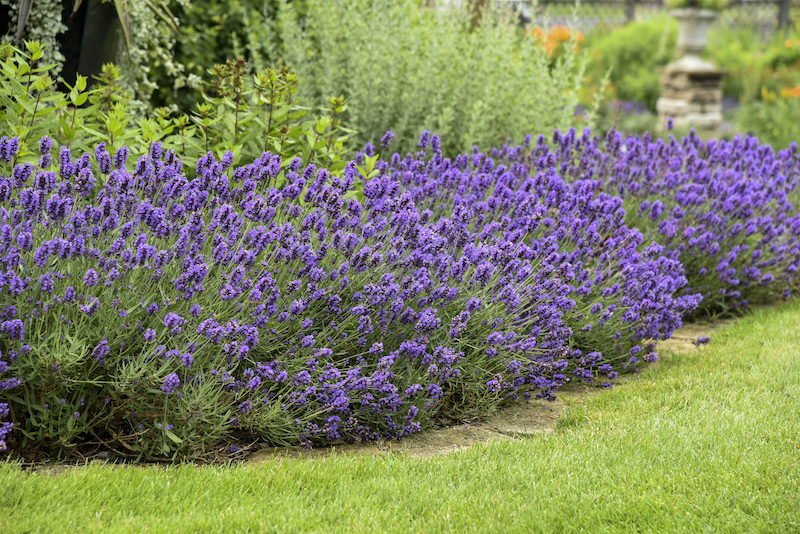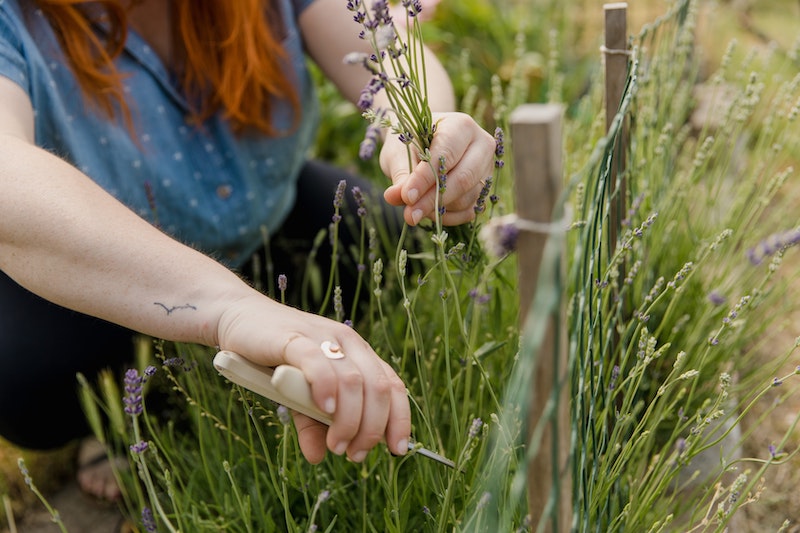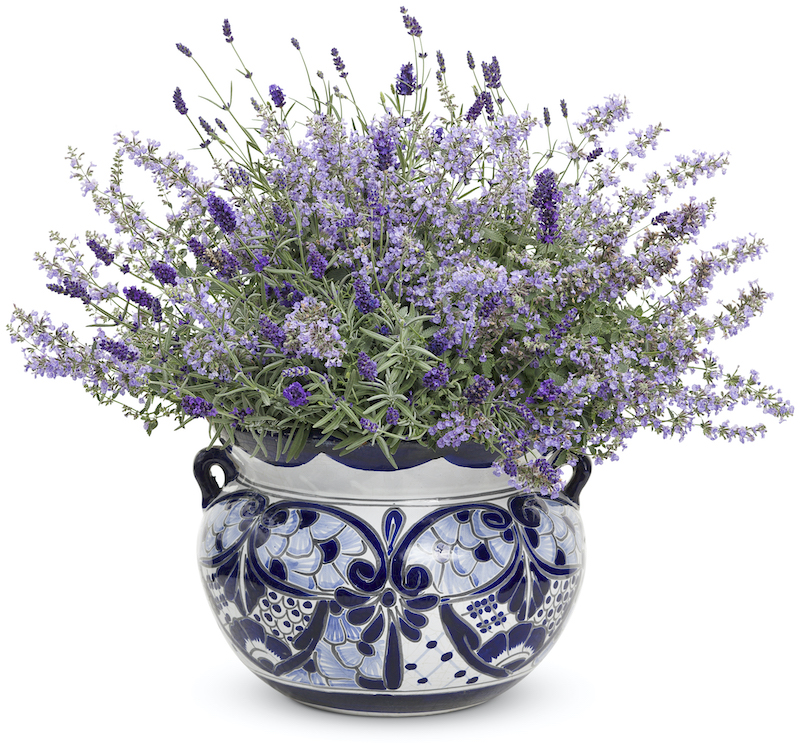Growing Lavender
Lavender is a lovely all-around plant. This fragrant perennial boasts gray-green foliage and tiny purple flowers that bloom along upright flower spikes. This European native has a mounded, compact form, and plants will reach 2 to 3 feet tall and 2 to 4 feet wide. This aromatic plant is not favored by deer and foraging animals, so include it in a garden or bed to deter animals from getting close. Lavender is an herbaceous perennial that grows in zones 5 through 9.

Planting Lavender
Plant Lavender in the spring, after the temperature is consistently warm and there is no longer a chance of frost. Lavender is tolerant of many growing conditions, but expect the best results when it is grown in full sun. Lavender grows well in poor, alkaline, well-draining soil and does not tolerate wet feet. Plants grown in low light may set fewer flowers.
Watering Lavender
Water Lavender plants regularly for the first growing season. Keep the soil consistently damp as the plant forms a robust root system. Established plants like to dry out, and over-watering is the biggest problem for lavender. While mature plants are drought tolerant, monitor the plant and water lavender during an extended dry period to help the plant look its best.
Fertilizing Lavender
Lavender plants are not heavy feeders, and less is certainly more when it comes to fertilizing this plant. Topdress the soil with organic compost when planting, and leave it at that. Fertilizing Lavender may cause the plant to be less potent and not as fragrant. This perennial performs best without the help of fertilizer and rich soil.
Pruning Lavender
Routinely trim lavender to feature the flowers in fresh or dried arrangements or to use in cooking. Cutting the plant back after flowering will encourage new growth and a full form. Lavender may become leggy halfway through the growing season, so cut the tall flower stalks back by up to one-third. Wait to remove dead growth until the spring when new growth emerges.

Caring For Lavender in Pots
Lavender is an excellent potted plant and can be brought indoors during the winter. This plant likes tight conditions, so select a pot an inch larger than the root ball. Place the plant in full sun and water when the top several inches of soil are dry. Drainage is vital because lavender plants do not tolerate overly damp conditions. Porous pots, like terracotta or clay, are good choices because they allow the soil to dry out between waterings.

Winter Care for Lavender
Lavender is an herbaceous perennial, and the foliage will die back in areas with cold winter weather. Harvest as much as you want before the first frost. Leave the vegetation in place until the spring and remove any damaged stems when the plant starts to push out new growth. Leaving the dead greenery in place helps to insulate the roots from cold winter weather.
Have a question about Lavender? Fill out the form below and we will try and get back to your question as soon as possible. We may even feature your question in this article to help other gardeners!
 |
Author Chris Link - Published 01-19-2023 |
